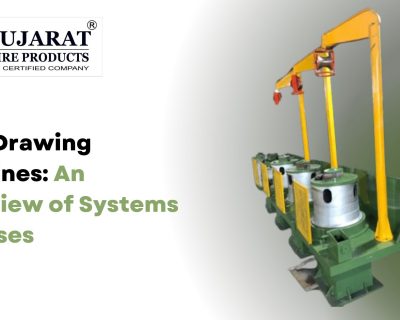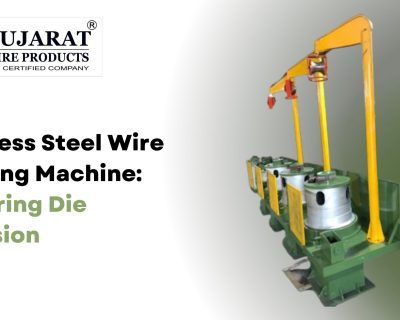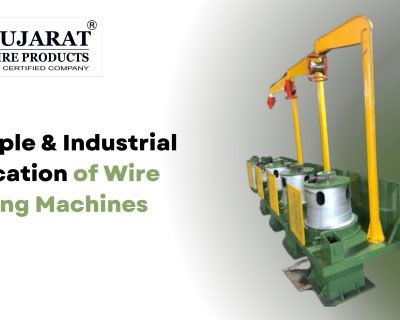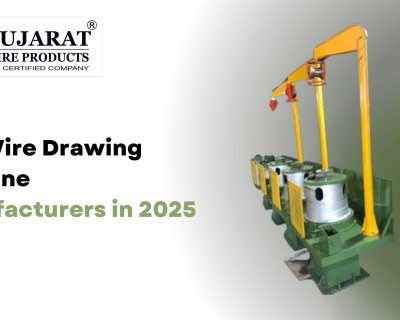Blog
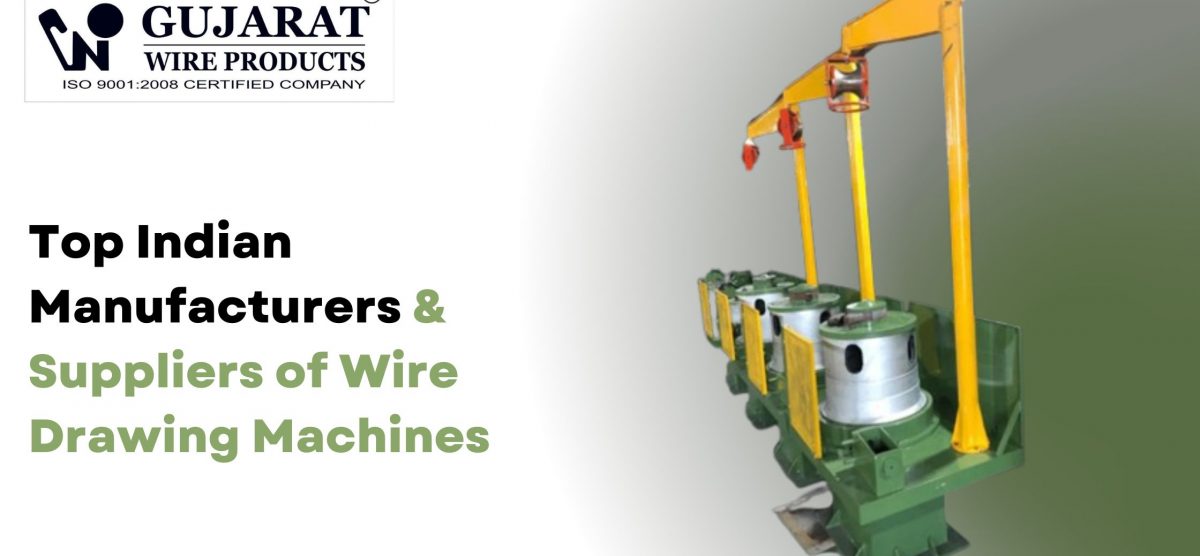
Top Indian Manufacturers & Suppliers of Wire Drawing Machines
Introduction
Over 40% of Indian wire manufacturers still rely on imported equipment, paying 30-50% more than they should for machines that arrive with zero local support. The assumption that foreign equipment guarantees better quality no longer holds when domestic manufacturers now deliver ISO-certified machines with faster delivery, lower costs, and on-ground technical assistance. India’s wire drawing machine market reached $156 million in 2025, driven by the country’s booming wire and cable sector expected to cross INR 1.5 lakh crore by 2030.
This guide breaks down what separates capable Indian suppliers from underpowered options. You’ll see the technical capabilities that matter, the regional manufacturing strengths across India, and the service factors that determine long-term equipment ROI. Whether you’re launching a wire production line or replacing aging machinery, understanding the domestic supply landscape is the fastest route to competitive advantage.
The Indian Wire Drawing Machine Landscape
India now manufactures the full spectrum of wire drawing equipment—from heavy-duty rod breakdown machines to precision fine wire systems for ferrous and non-ferrous applications. The sector serves manufacturers in construction steel, electrical cables, automotive wiring, and specialty alloys.
The wire and cable industry’s 11-13% CAGR between FY24 and FY29 directly fuels demand for drawing machines. Infrastructure projects, renewable energy installations, EV charging networks, and 5G rollouts create sustained equipment orders.
India’s “China Plus One” positioning and Make in India incentives have accelerated local manufacturing capacity. Buyers now choose domestic suppliers to avoid import delays, currency fluctuations, and the service gaps that come with overseas equipment.
Key Manufacturing Hubs and Regional Strengths
North India: Delhi NCR and Ghaziabad
The Delhi NCR belt concentrates a high density of machine tool manufacturers with expertise in automation and custom fabrication. Proximity to steel and metal suppliers reduces lead times for machine components.
West India: Gujarat and Maharashtra
Gujarat specializes in integrated wire production systems—machines that handle drawing, annealing, straightening, and cutting in unified lines. The state’s export infrastructure supports both domestic and international shipments.
Maharashtra’s industrial ecosystem offers strong backward integration for electrical components, drive systems, and control panels.
Other Regions
Rajasthan and Punjab host manufacturers focused on semi-automatic and budget-oriented machines for small to mid-scale operations.
Technical Capabilities That Define Quality Suppliers
Machine Range and Customization
Reliable suppliers manufacture multiple machine types—dry block, wet tank, bull block, and straight-line configurations. Customization capabilities for wire diameter ranges, drawing speeds, and material specifications separate general fabricators from specialized manufacturers.
Single-purpose machine shops cannot adapt to evolving production requirements. Buyers need suppliers with R&D infrastructure and in-house design teams.
Automation and Control Systems
Modern wire drawing machines integrate PLC-based controls, touchscreen HMIs, and variable frequency drives. These systems enable real-time speed adjustments, tension monitoring, and automated die sequencing.
Fully automatic operation reduces labor dependency and eliminates manual errors in tension control. Machines without closed-loop feedback systems produce inconsistent wire quality.
Energy Efficiency and Drive Technology
Servo motors and frequency converters cut energy consumption by 20-30% compared to older DC drive systems. Power efficiency directly impacts per-kilogram production costs in high-volume operations.
Suppliers offering energy audits and consumption projections demonstrate technical depth beyond basic machine assembly.
Service Infrastructure and Post-Sale Support
Indirect sales through regional distributors remain the dominant model in India, accounting for broader market reach and localized technical assistance. Manufacturers with established dealer networks ensure faster spare parts delivery and on-site troubleshooting.
After-sales support—installation, commissioning, operator training, and maintenance protocols—determines uptime rates. Equipment breakdowns cost manufacturers between 15-25% of monthly production capacity when service response is slow.
Suppliers maintaining in-house service teams with regional coverage reduce downtime to hours instead of days. Remote diagnostic capabilities via IoT-enabled controls further accelerate issue resolution.
Quality Standards and Certifications
ISO 9001 certification indicates structured quality control processes across procurement, manufacturing, and testing. Export-grade machines meet international safety and performance standards even when sold domestically.
Inspection protocols should cover die alignment precision, motor torque consistency, and tension sensor calibration. Manufacturers documenting quality checks at each production stage deliver more reliable equipment.
Material selection for critical components—drawing capstans, bearing assemblies, and gearboxes—impacts machine lifespan. Suppliers specifying component grades and heat treatment processes demonstrate engineering rigor.
Buyer Considerations for Supplier Selection
Production capacity requirements dictate machine type. Bull block machines suit medium-speed, multi-pass operations. Straight-line systems work for limited reductions or large-diameter wires. Wet tank machines handle high-speed copper and aluminum drawing with continuous cooling.
Warranty terms vary significantly across suppliers. Standard offerings include 12-month coverage, but extended warranties on electrical systems and drive components reduce total cost of ownership.
Spare parts availability determines long-term operational costs. Suppliers manufacturing components in-house maintain better stock levels than those sourcing externally.
Price variations of 25-40% across suppliers often reflect differences in automation levels, component quality, and after-sales infrastructure rather than performance capabilities. Lowest-cost options frequently carry hidden expenses in energy consumption, maintenance frequency, and downtime.
Conclusion
Indian manufacturers now deliver wire drawing machines that match international standards while offering faster delivery, lower costs, and superior service infrastructure. The domestic market’s $156 million valuation and projected growth reflect both capability and demand alignment. Buyers choosing local suppliers reduce equipment costs by 30-50%, cut installation timelines by weeks, and gain access to on-ground technical teams.
Service responsiveness and customization depth matter more than equipment origin. Suppliers with in-house R&D, comprehensive machine ranges, and established dealer networks deliver better long-term ROI than import-dependent options.
Gujarat Wire Products manufactures and supplies wire drawing machines built for India’s toughest production environments—handling everything from construction steel to precision copper wire. Since 1975, we’ve delivered integrated drawing systems with automated controls, energy-efficient drives, and full after-sales support to manufacturers across India and 15+ export markets. Our ISO 9001:2008-certified facility in Gujarat produces customized solutions for any wire diameter, material type, and production scale. Get a technical consultation and equipment proposal tailored to your specific wire manufacturing requirements athttps://gujaratwireproducts.com/.

